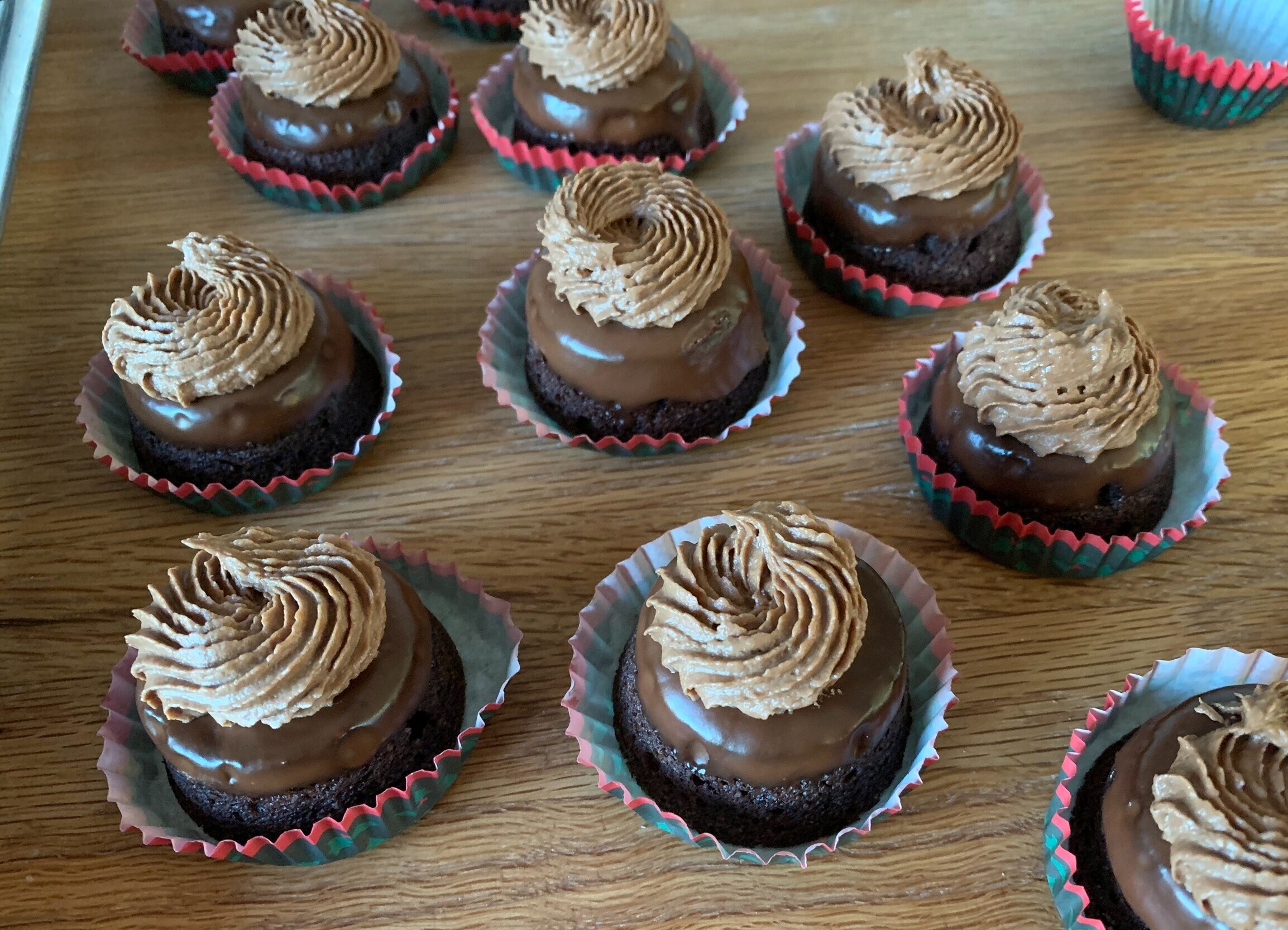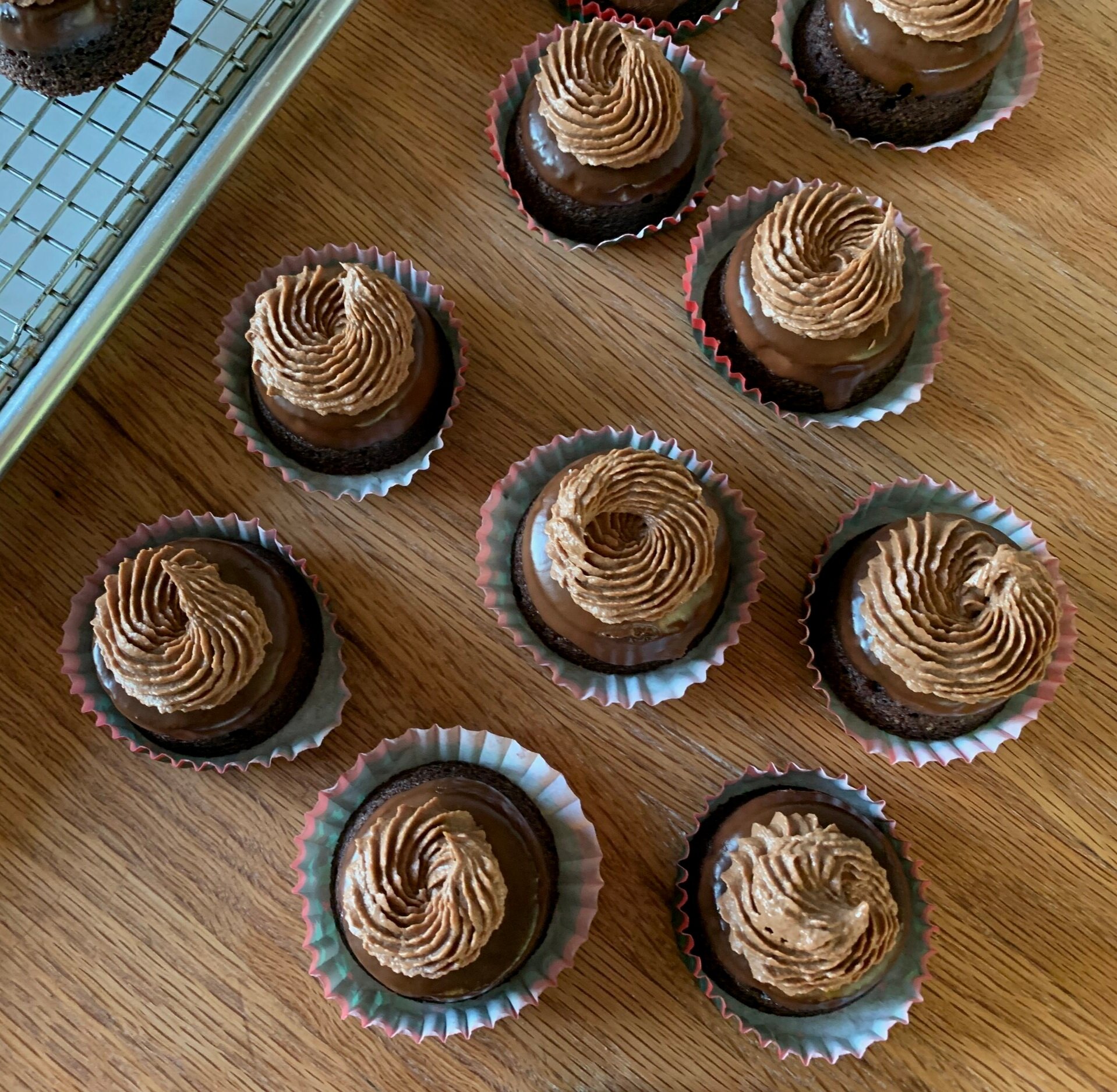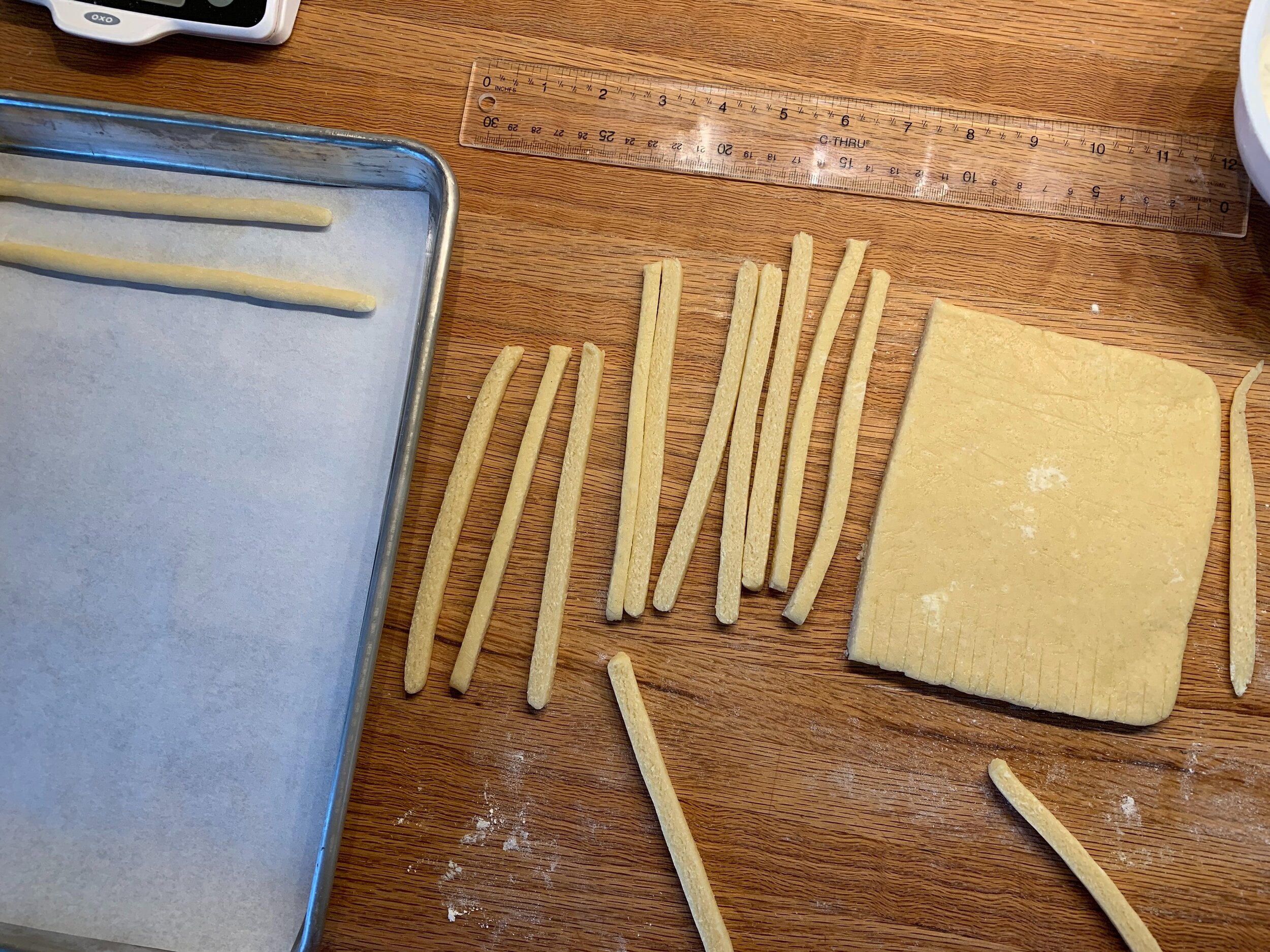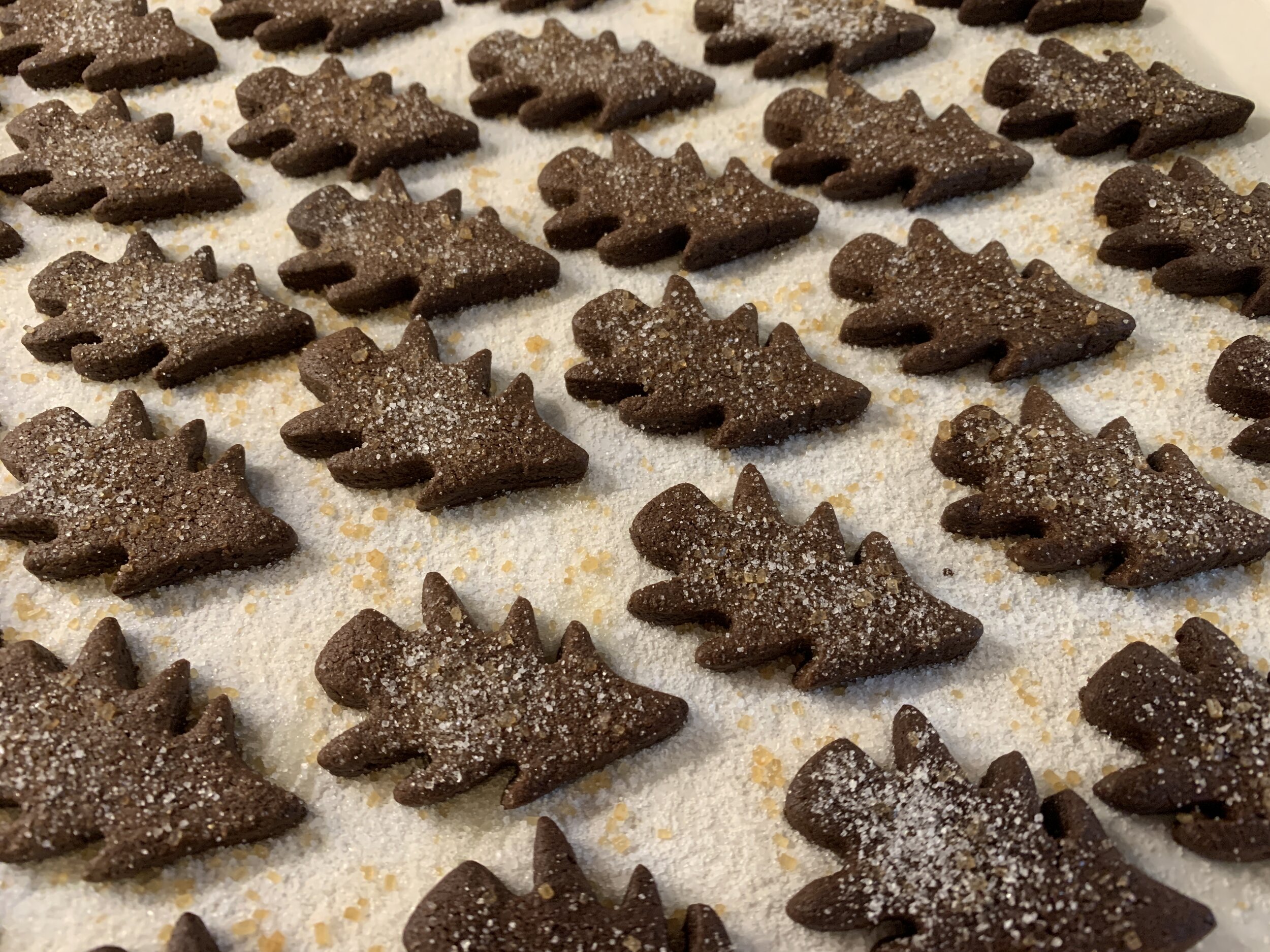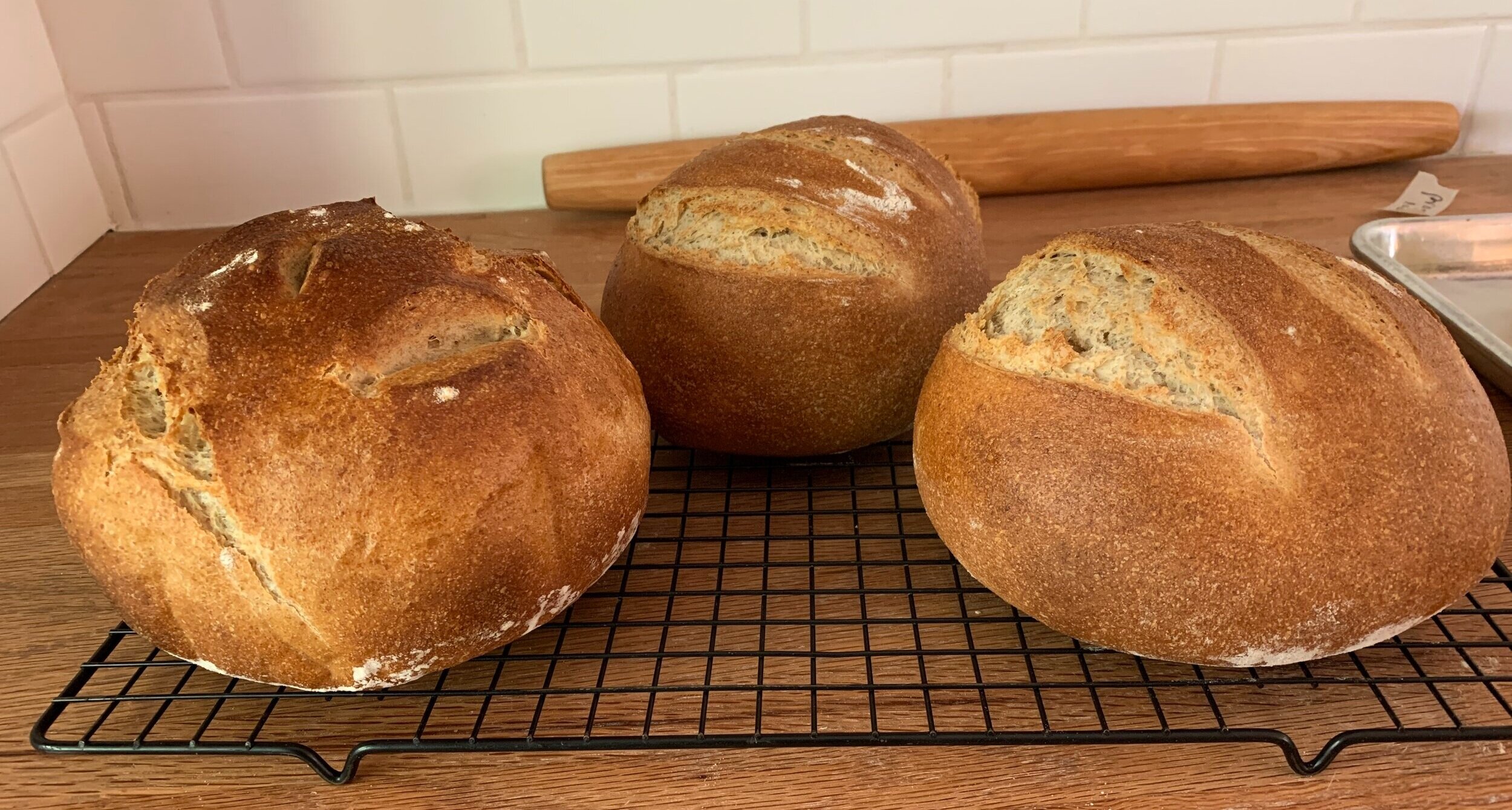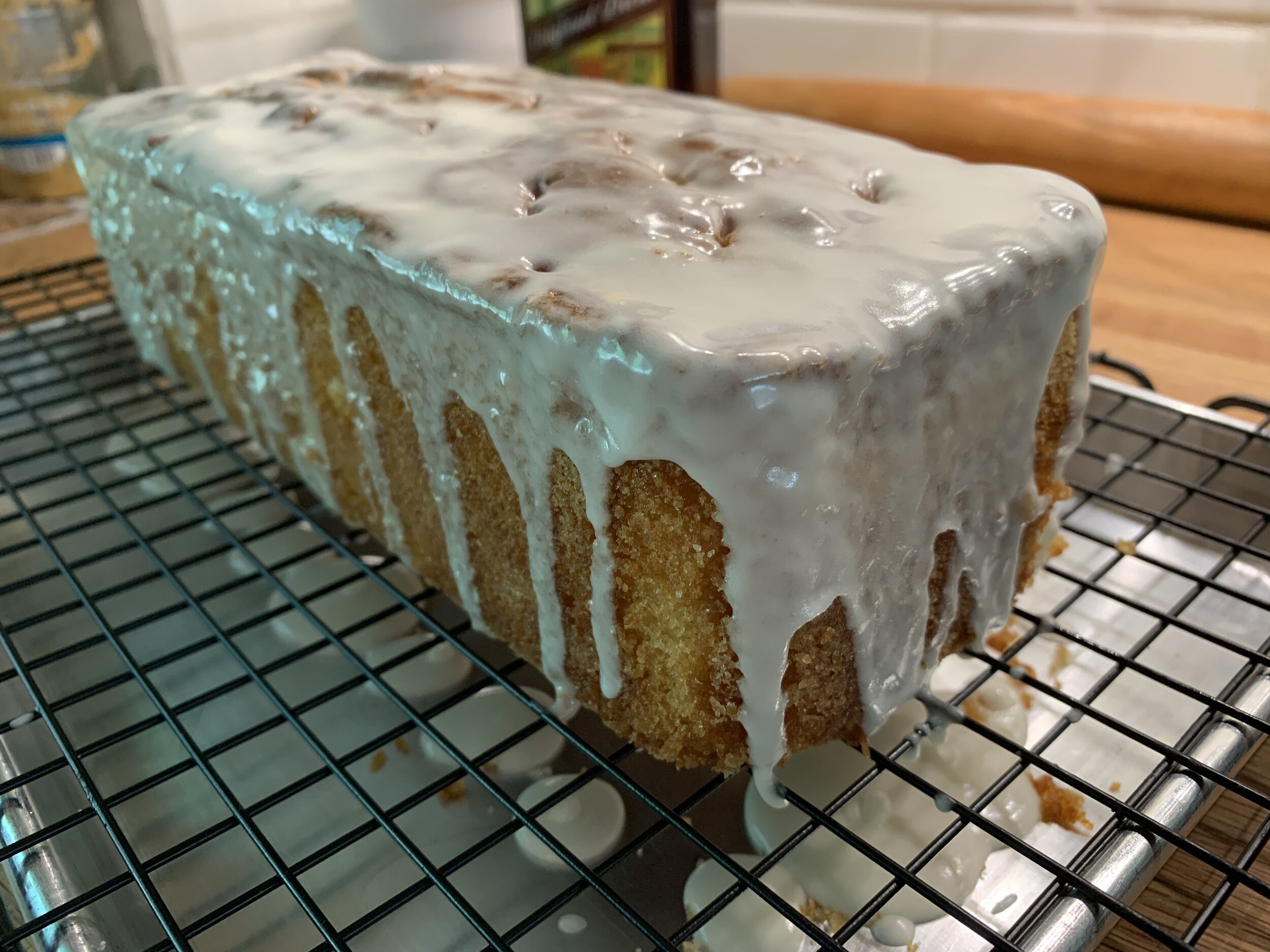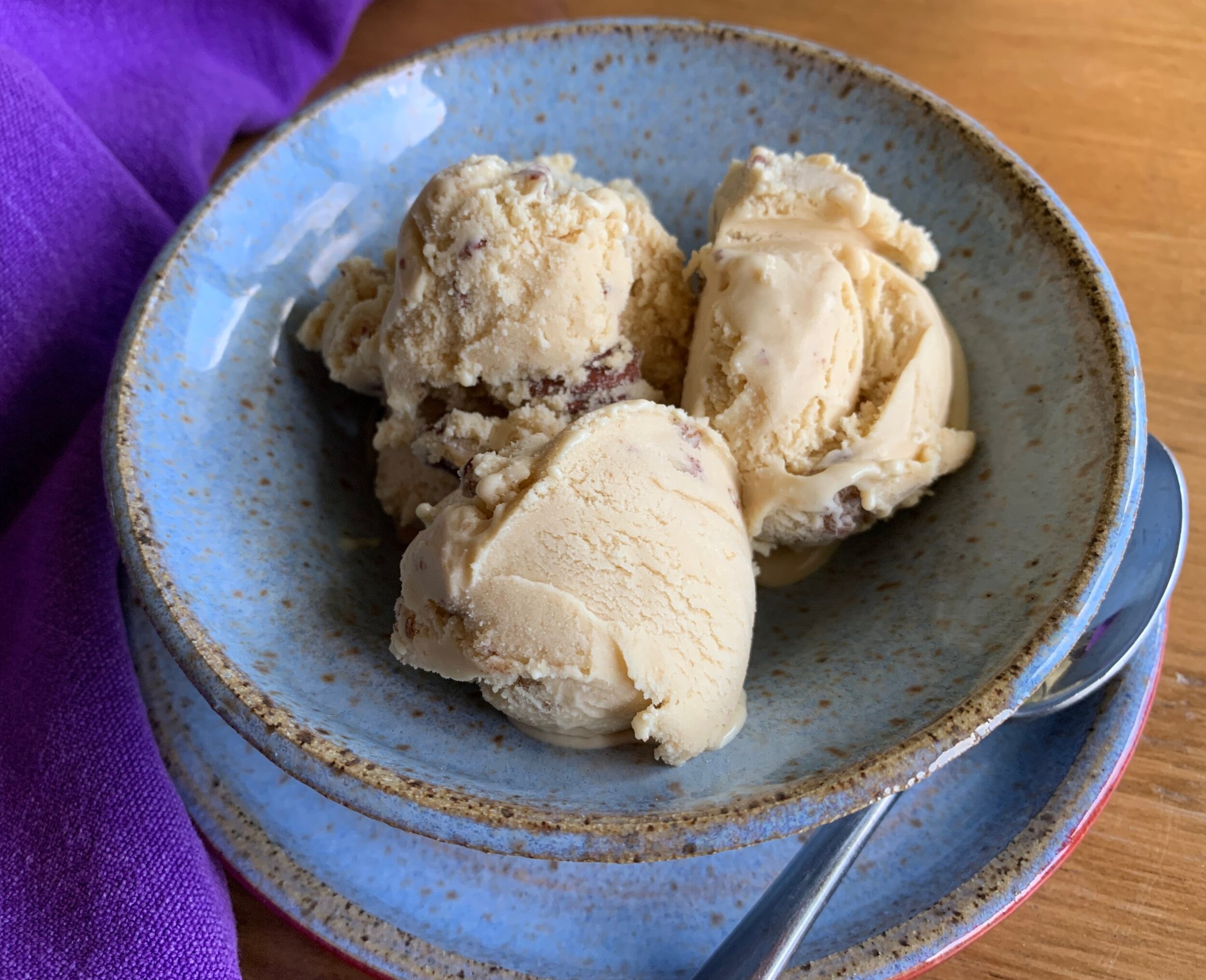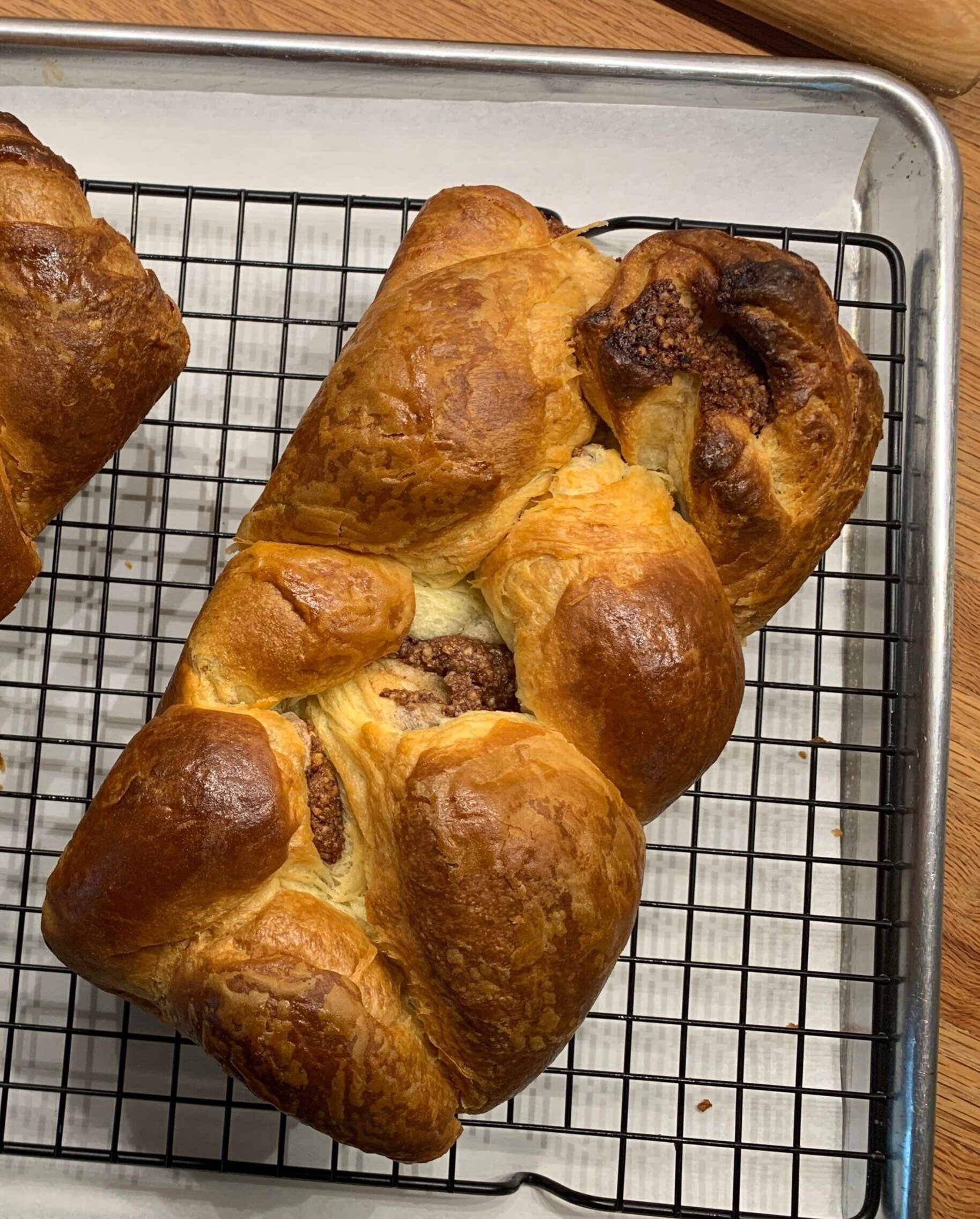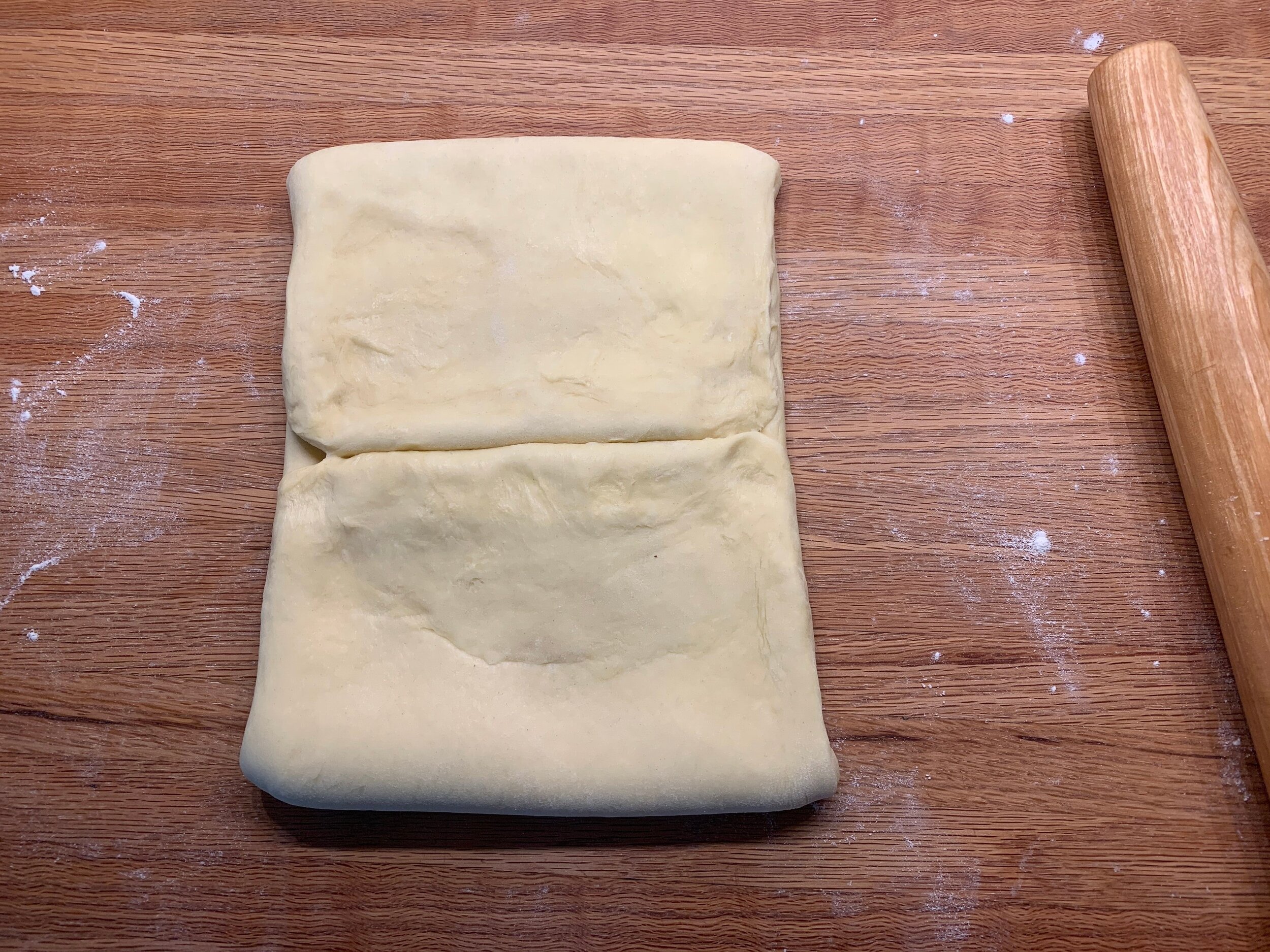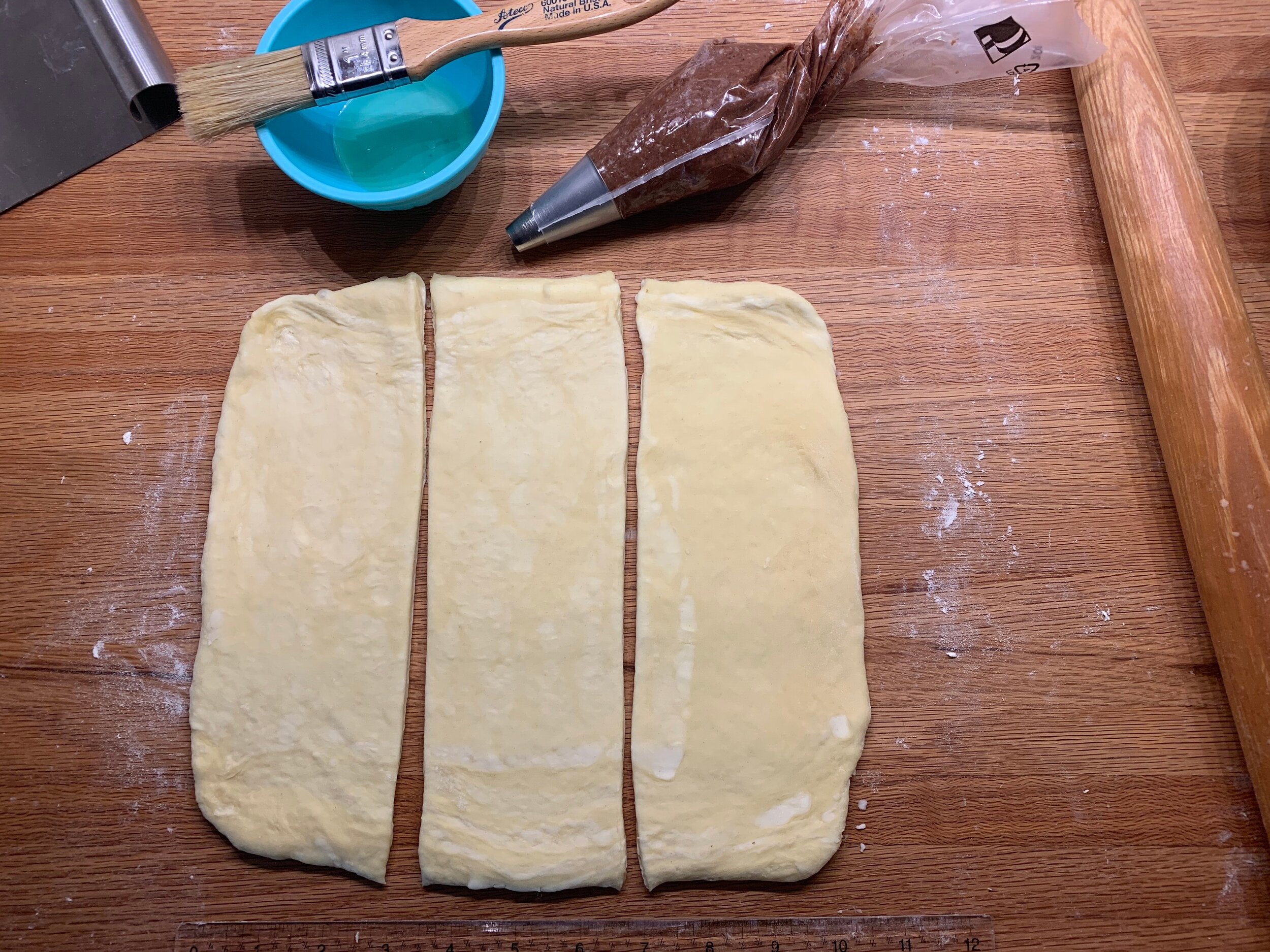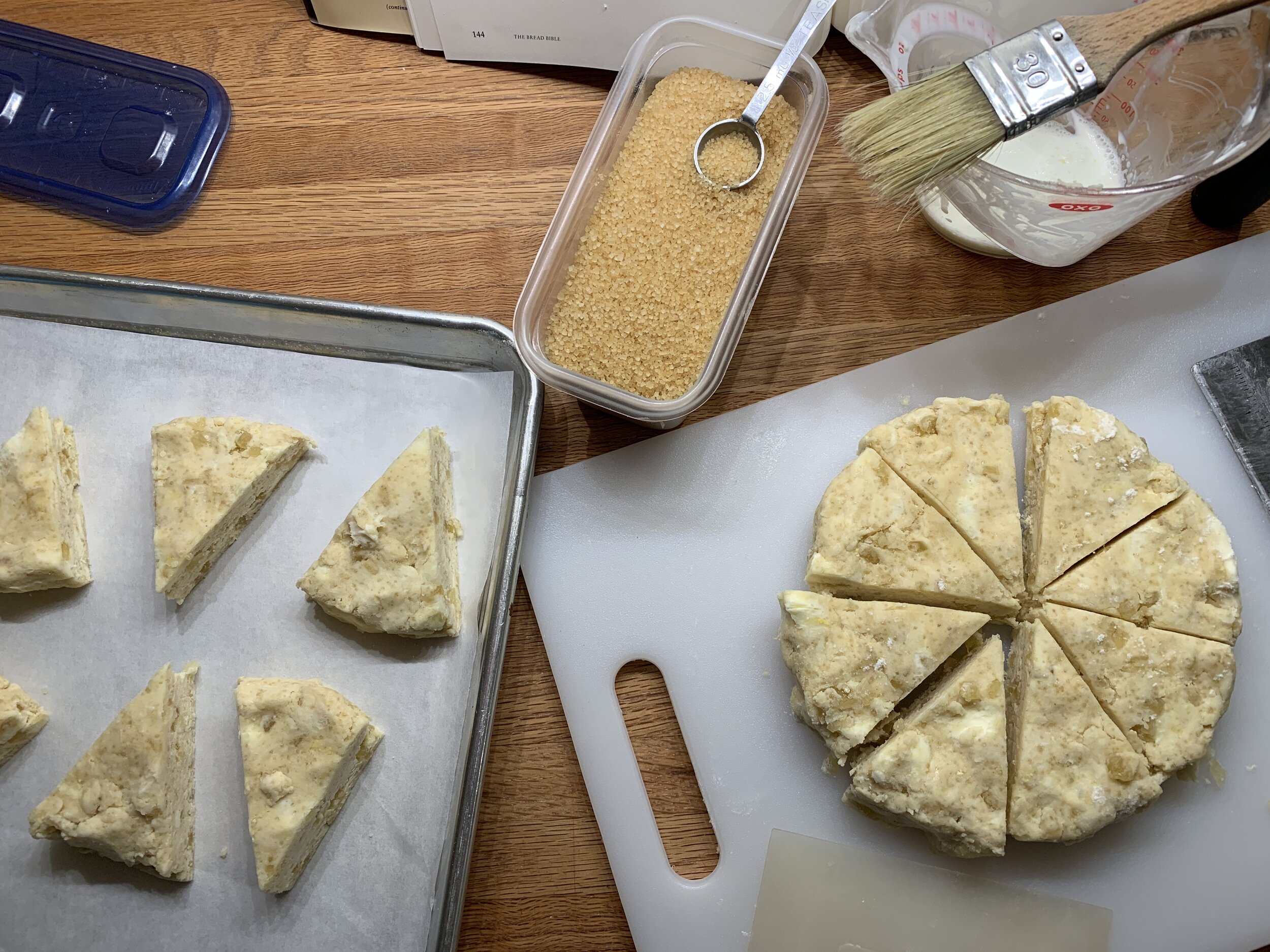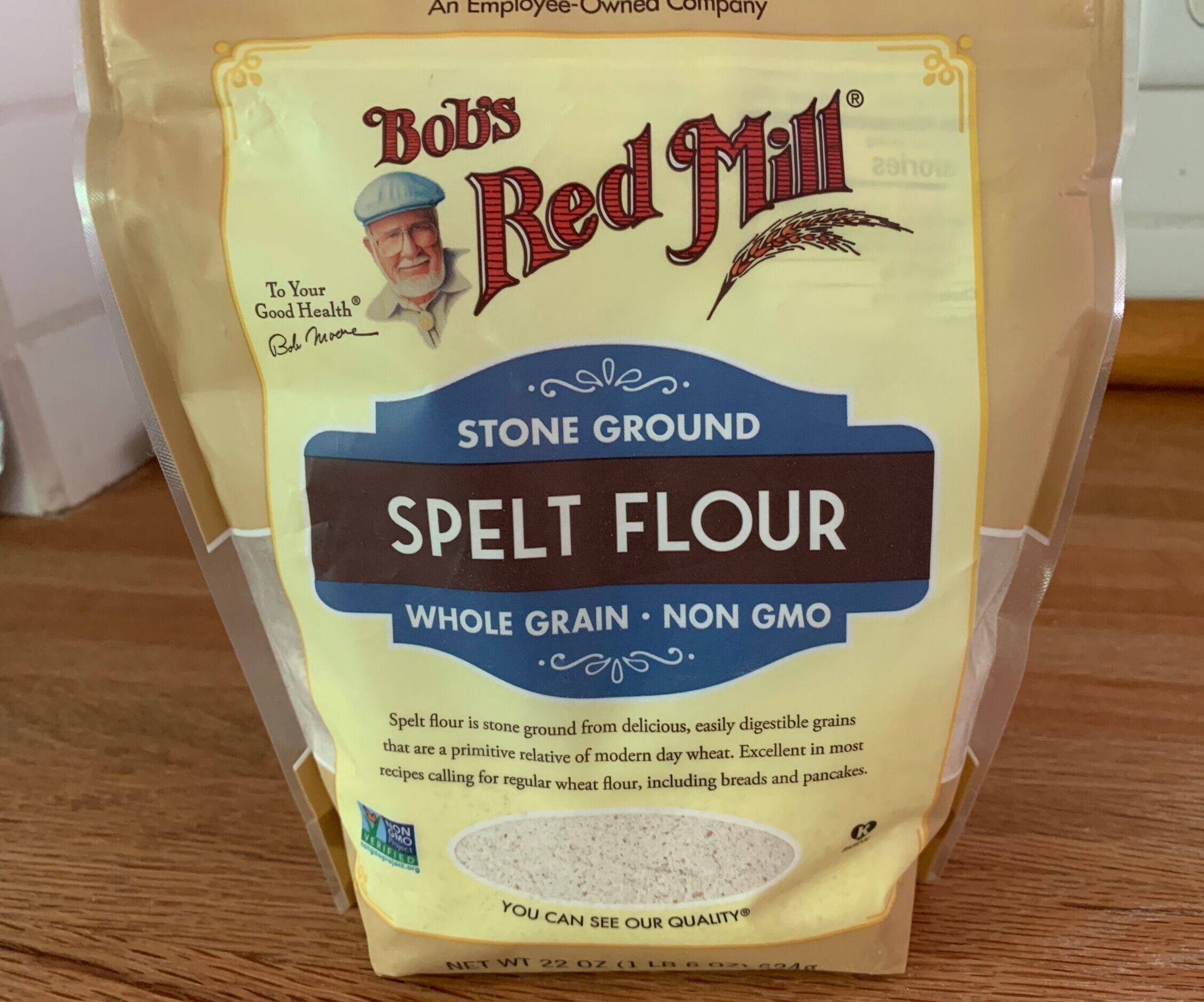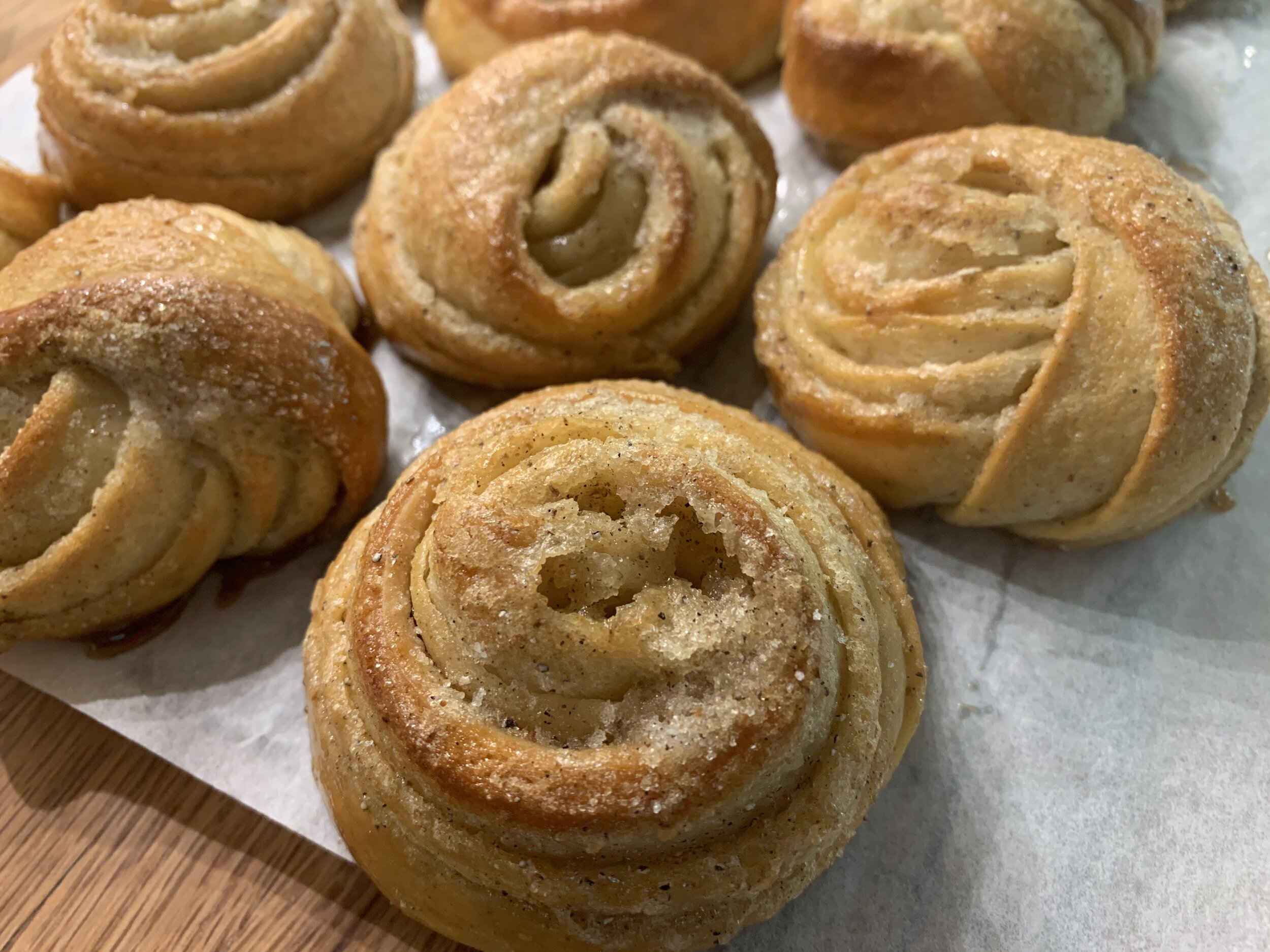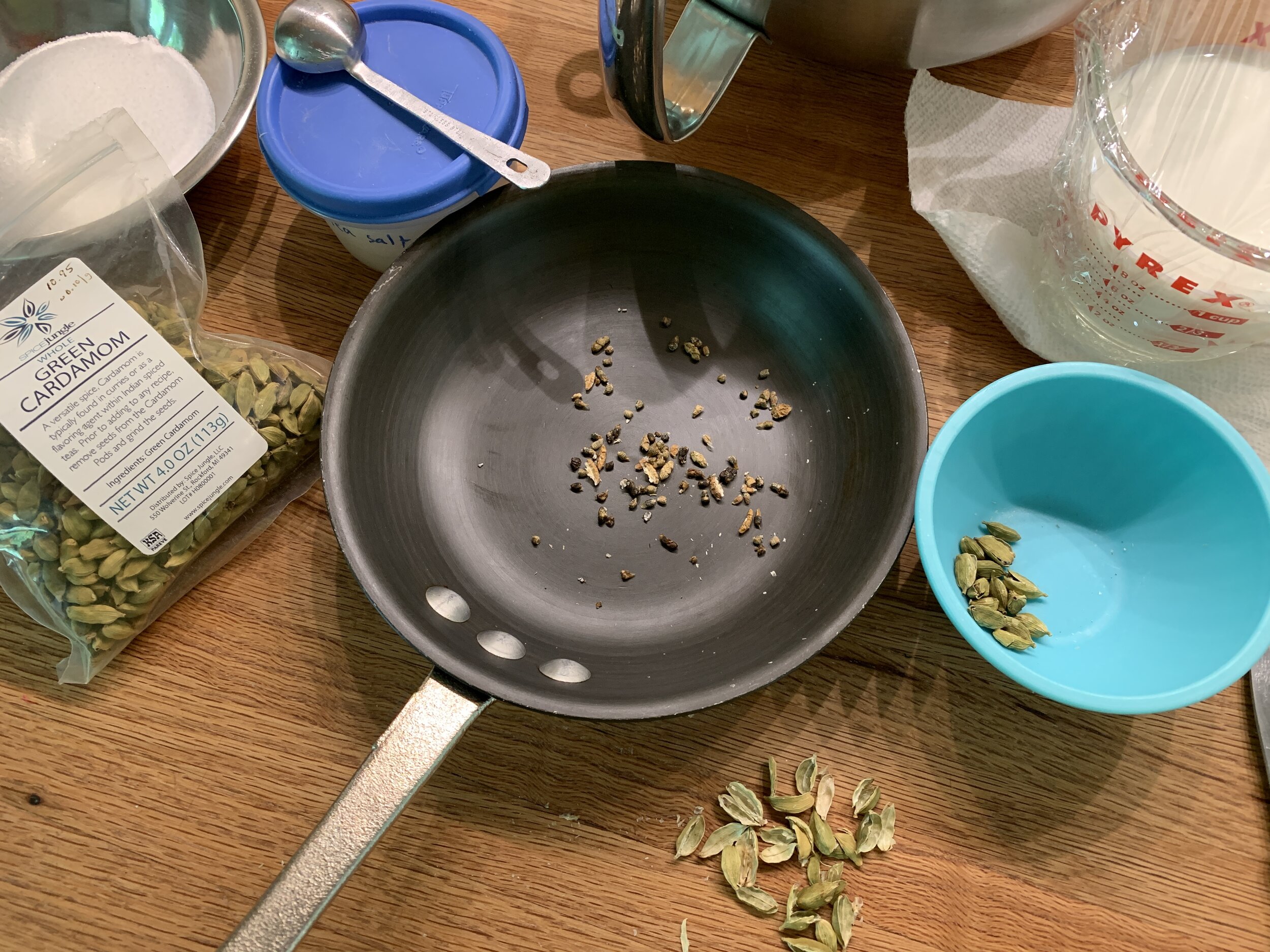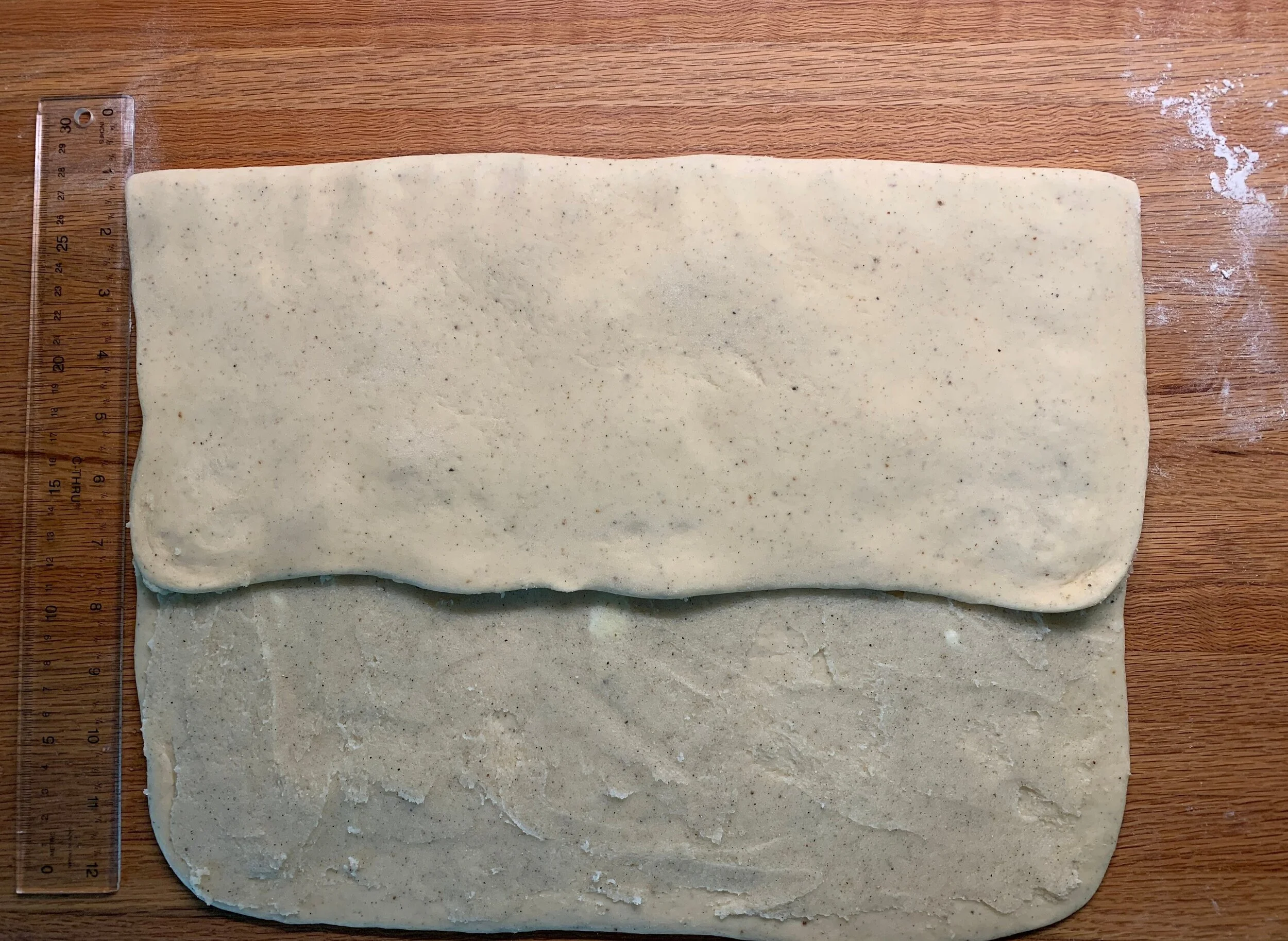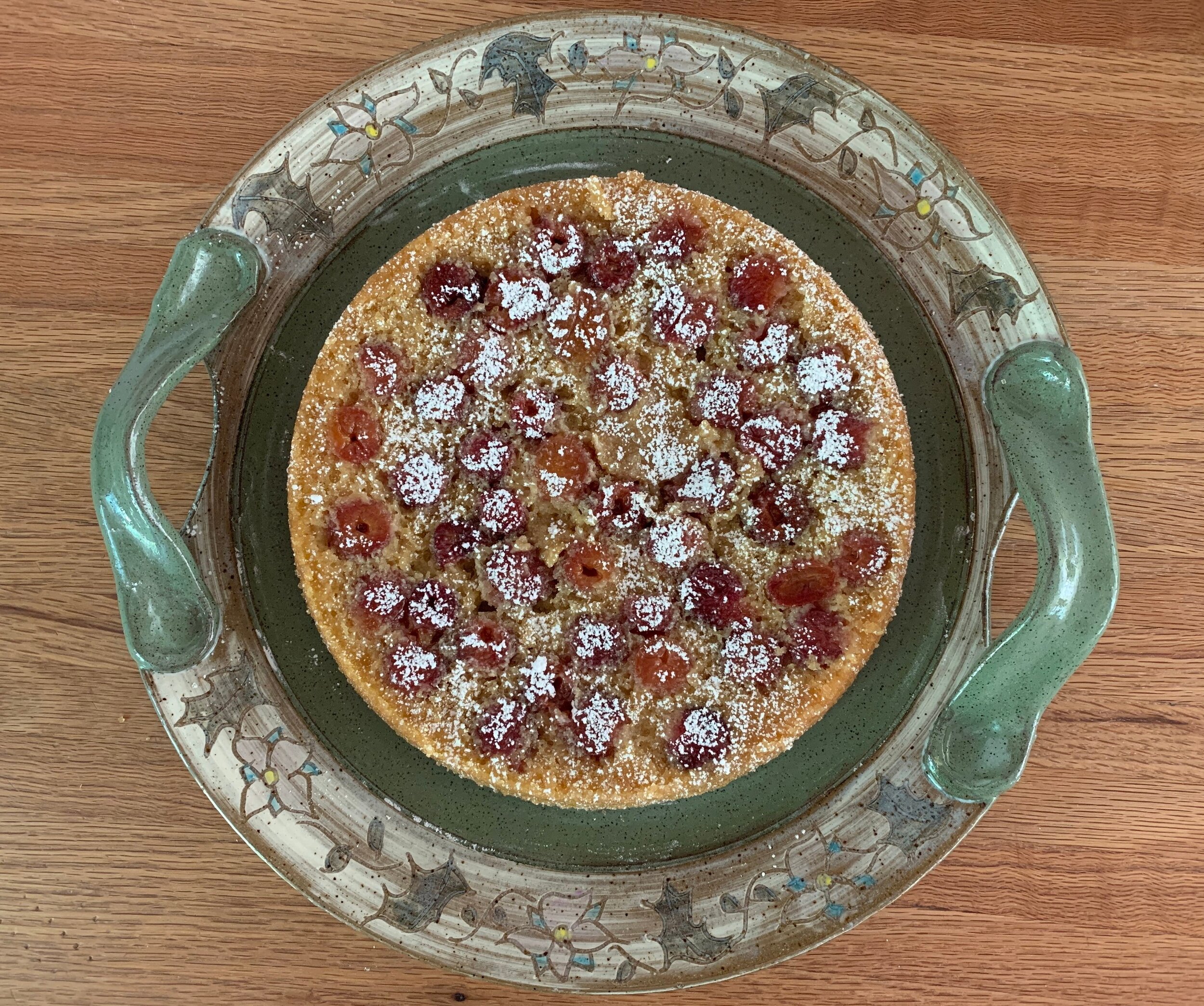More fun with croissant dough - berry flan buns and bourbon glazed pecan spirals
/I typically have croissant dough in my freezer just waiting to be formed into something delicious. As it turns out, I had a couple of batches that needed to be used for fear that they would soon be over-the-hill soooooo . . . . .
I baked one batch as standard croissants destined for the ever popular twice baked croissant aux amandes.
Freshly baked all butter croissant
Twice baked croissant aux amandes
I divided the other batch in half with two goals in mind - flan buns and pecan spirals. First up - Kouign-amann style berry flan buns. Many of you know about this caramel-y, layered Breton specialty that continues to be very popular in the US. There are specific recipes for K-a dough that differ somewhat from croissant dough, buuuuuuut - you can use croissant dough too! As a matter of fact, it was Chef Xavier Cotte at Le Cordon Bleu Paris who demo’ed Kouign-amann to our class using croissant dough all those years ago. What a treat that was.
Did you realize that Kouign-amann was the subject of the very first post I wrote for this blog back in the fall of 2014! Wow, how time flies.
While I use muffin tins, individual cake pans and ring molds to bake the various twists, spirals and twirls that I make with croissant dough, I love making these in buttered and sugared ring molds. I find they brown much better in the open rings. These are 80 mm (3 inches) in diameter and 2.54 cm (1 inch) high, taller than the usual open tart rings I use for tart making. They’re perfect for this use as well as for other pastries like the aforementioned spirals, twists or twirls.
For a half batch of dough I go for a yield of 9 pastries, rolling the dough out (on a sugared rather than floured surface) to a 12” x 12” square, then cutting nine 4” x 4” pieces. Do your best to keep the corners square, although a little curve never hurt a thing. As you roll, flip the dough from front to back, sprinkling more sugar on as you go. Don’t be shy.
Now simply fold the corners of each piece up, kind of pleating the sides, and set the dough into the buttered/sugared rings. Easy-peasy!
Cover lightly with plastic wrap and give them a 45-60 minute rise - you should see more definition of layers and a general pouffy-ness. Meanwhile heat the oven to 375ºF.
You can bake these au naturel, but here I piped a blob of pastry cream into the center (hence the “flan” label), added some blueberries/raspberries and topped with another blob of cream and a sprinkle of raw sugar. I usually have berries in the freezer and add them frozen to avoid the mushiness and wateriness that happens if they’re thawed first (don’t do it!). It’s also helpful that frozen raspberries are easy to break up into smaller pieces for placement in a smallish space.
Sheesh! I forgot to grab a pic after assembly so shot a quick one after going into the oven. Kind of a cool perspective.
Bake about 20-25 minutes until the pastry is golden and the cream set. Once out of the oven I leave them on the sheet pan but gently lift off the rings - they come off much more easily when still warm, before the caramel-y sugar cools.
They’re deelish still slightly warm, but you can also finish cooling them on a wire rack and enjoy the same day.
You can freeze them too. If you do, plan for a treat with morning coffee by heating your oven to 325ºF, take them right out of the freezer, place on a parchment lined sheet pan and thaw/warm for about 15 minutes. If they’re still a bit cool inside, give them another 5 minutes or so. You be the judge.
Next up - crackly glazed pecan spirals.
I’ve previously posted a version similar to this using laminated brioche dough, but here I’m using a slightly different filling and opted for a bourbon butter glaze like the one I used on pound cake a while back. I won’t spend a lot of time on this but just want to share it with you.
For a half batch of croissant dough I’m going for 8 or 9 pastries - just depends on how things roll out.
For the filling blend 28 g/ 2 tablespoons soft unsalted butter with 70 g brown sugar (light or dark, either way). Add a generous teaspoon of spices if you wish - cinnamon or a mixture of your favorites like coriander, cardamom, cinnamon and ginger.
Roll the dough to about a 10”x10” square, spread the filling over it, top it with finely chopped pecans (eyeball it) or your own favorite nut, then roll it up into a log. Cut ~3 cm slices and place them in the center of buttered and sugared rings. You might notice below that I have wrapped two shallower rings together with foil. Since my flan buns were occupying my higher rings, I created my own!
Cover lightly with plastic wrap and let rise about an hour. I hope you can appreciate in the image below the increase in fullness of the dough compared to above.
Bake at 375ºF for about 20-25 minutes until golden brown, which gives you time to make your glaze.
Here you go: heat 2 tablespoons bourbon with 28 g / 2 tablespoons unsalted butter to melt, then stir in 50 g / 1/4 cup granulated sugar, stirring to dissolve. Once the sugar is dissolved bring to a boil for one minute. Remove from the heat and blend the mixture with 50 g / 1/2 cup confectioner’s sugar and 2 tablespoons of crème fraiche.
Once out of the oven, remove the rings (sooner than later is always best).
Brush the glaze generously over the spirals. Now pop the tray back in the oven for about 2-3 minutes. The heat makes the glaze crackle and bubble up, although you can certainly omit this step if you prefer a smooth glazed look.
Smooth or crackled, they’re tasty either way.
Have fun creating your own treats using croissant dough. You can do it!



















